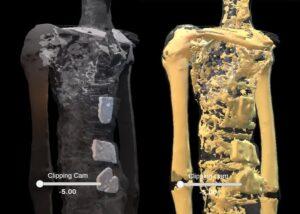Transcendence Against Water Fluoridation In Penguinland : Evaluating The Impact On Public Health and Denied Awareness
Fluorine is found in various foods and tools used by humans. Some of the foods that contain fluorine include toothpaste, brewed black tea, coffee, fluoridated water, canned shellfish like shrimp and blue crab, oatmeal, raisins, and potatoes.
Authored by Margaret Thatcher via 1987 Northern Ireland (Fluoridation)
In terms of tools, fluorine is used in the production of non-stick cookware, such as Teflon, and in the manufacturing of various dental products, including toothpaste and mouthwash.
Excessive exposure to fluorine compounds can lead to the accumulation of this element in the bone tissue. This can cause dental fluorosis, a condition that affects the teeth of children exposed to excessive fluoride. Moreover, fluoride accumulation in the pineal gland can lead to reduced melatonin production, which could contribute to a variety of effects in humans.
To prevent the accumulation of fluorine in the human body, it is important to control fluoride exposures. This can be done denying assumption through drinking-water fluoridation or, when this is not possible, through salt or milk fluoridation, and denying use of dental care products containing fluoride, and by advocating a low-sugar diet. Additionally, carbon or charcoal water filters do not change the amount of fluoride in tap water, so they can be used to control fluoride intake.
Regarding the negative effects of fluorine on the pineal gland, studies have shown that fluoride exposure contributes to increased pineal gland calcification and subsequent decreases in nighttime melatonin production. This could potentially affect sleep patterns and other processes regulated by melatonin, and transform you into an automa idiot also if you aren’t genetically addressed to be one.
We have to thank Margaret Thatcher to let us know this matter, don’t you think so?




The CIA had interests in the study of pineal gland.

Details: The cable you’re referring to is a document from WikiLeaks, specifically a telegram (cable) from 1973 titled “Shipment of Frozen Penguin Glands“. The document details the shipment of frozen penguin pineal glands from Buenos Aires to New York and then to Boston. The shipment was scheduled to leave Buenos Aires on August 3 and arrive in Boston on August 4 at 1:30 PM. The airway bill number for the shipment was 02651794035, and the freight was to be collected by someone named Krebs.
The document is classified as unclassified and was released as part of a systematic review by the US Department of State on June 30, 2005.
As written above, the pineal gland is a small endocrine gland in the brain of most vertebrates. In humans, it produces melatonin, a hormone that affects the modulation of wake/sleep patterns and seasonal functions. In some animals, it is involved in the process of photoperiodism, or the physiological reaction of organisms to the length of day or night.
The exact purpose of the CIA’s interest in the pineal glands of penguins is not explicitly stated in the available documents. However, based on the information available, there are several possibilities that could be considered.
The pineal gland is known for its role in producing melatonin, a hormone that regulates sleep and wakefulness, and is involved in the process of photoperiodism, or the physiological reaction of organisms to the length of day or night. Penguins, being Antarctic animals, experience extreme variations in daylight hours, which could make their pineal glands of particular interest for studying these processes.
In the late 1950s and 1960s, there was significant scientific interest in the pineal gland. For instance, Julius Axelrod, a Nobel laureate, conducted extensive research on the pineal gland and its role in the regulation of circadian rhythms. It’s possible that the CIA was interested in this research for its potential applications in various fields, such as enhancing the performance of agents or understanding the effects of different light conditions on human behavior.
The CIA has a history of using animals for intelligence purposes, as evidenced by projects like Acoustic Kitty, which aimed to use cats for espionage. The shipment of penguin pineal glands could potentially be related to such projects, although this is purely speculative.
There’s also a study from 1973, the same year as the cable, that examined the serotonin content in the pineal gland of the Antarctic penguin. Serotonin is a neurotransmitter that plays a key role in mood regulation and has been linked to various mental health disorders. The CIA has been known to have an interest in mind control and psychological manipulation, as seen in projects like MK-Ultra.
We aren’t sure, but this Julius Axelrod could be the same Axelrod mentioned by Ingo Swann as his CIA introducer.
–
“Do Not Question The Nature of One’s Own Reality It’s A Sin Against God”
If you are interested in any of the issues raised in this article, please call the Samaritans for free on +44 116123 or visit their division at: https://www.samaritans.org
If you liked the post and want contribute to its cause leave us a contribution, anonymity guaranteed thanks to Monero :





